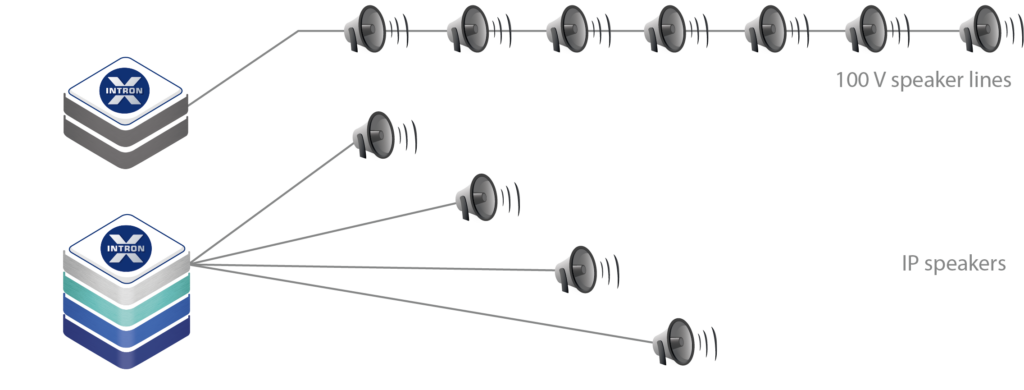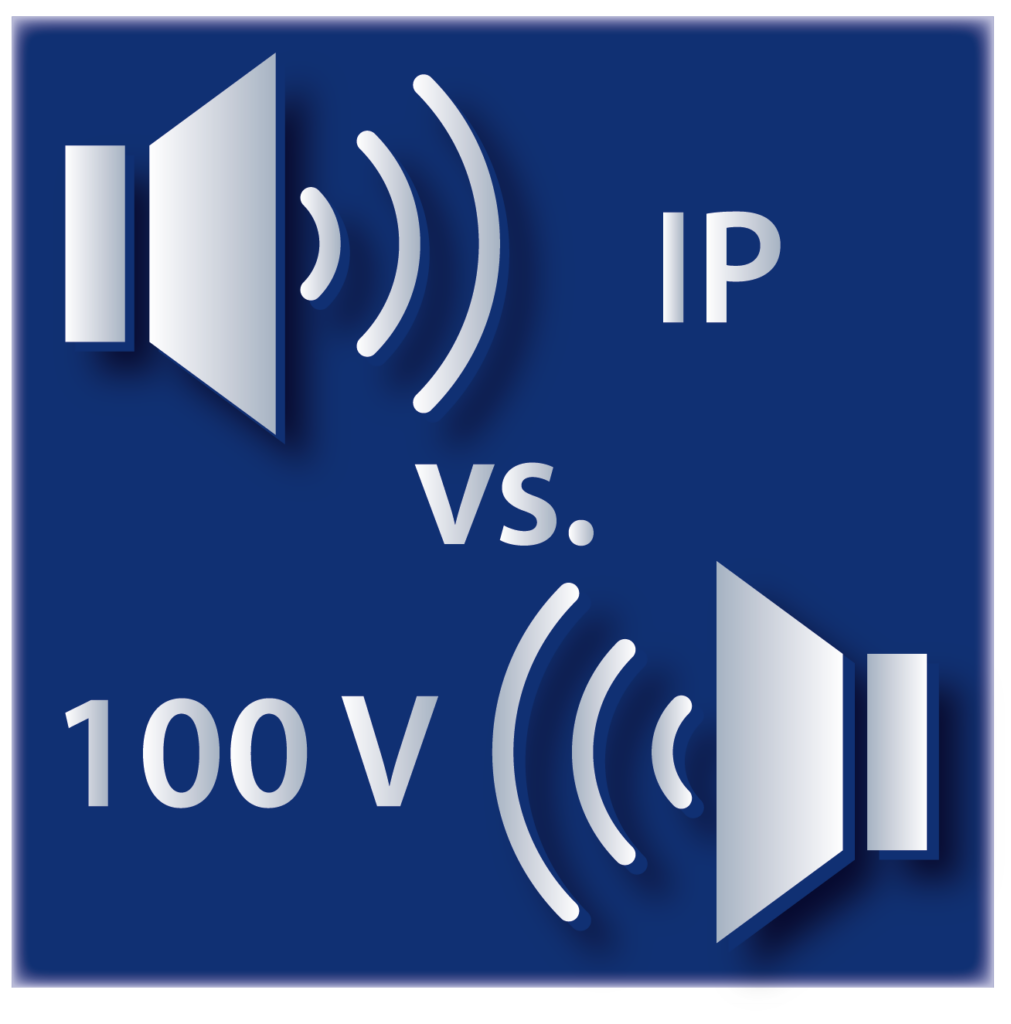A brief excursion into the advantages and disadvantages of both systems
Author: Georg Merkert
100 V speaker systems have been around for a long time. To call them ‘outdated‘ would be too short-sighted and not really correct.
If we look at an oil and gas industrial plant, for example, we have a wide variety of areas. An adapted, safe and standard-compliant sound system is required here.
Let’s take a brief look at the requirements and challenges that need to be met for this type of sound system:
- Potentially explosive areas > Ex-approved speakers
- Very loud areas > speakers with high sound pressure and corresponding output
- Office environments > many small speakers with low output and individually adjustable volume
- Workshops, storage areas > weatherproof speakers, high volume levels
- Spacious areas > long cable runs
- Remote areas > a few speakers
- Monitoring the cable route and impedances > high integrity requirements
- Cabling as a ring structure > high reliability
- Standard speakers, e.g. EN54-24 > assured audio and long-term quality

100 V advantages
- The range of 100 V speaker types available is large and varied to meet all the above requirements.
- A 100 V speaker cabling system can supply practically all areas with the same cable.
- Long cable runs, e.g. 1 km and more, can be realized with 100 V cabling.
- The 100 V cabling can be implemented with inexpensive cables.
- A typical industrial 300 watt PA/GA amplifier can supply 50 6 watt speakers (at 80% load this would still be 40 speakers).
- MTBF times of a standard 100 V industrial speaker are several 100,000 hours.
100 V disadvantages
- Volume settings are difficult to implement:
- Amplifier only (many speakers)
- Line only (many speakers)
- Volume control (complex installation, poor accessibility)
- Small, self-sufficient sound zones with few speakers
- An entire amplifier channel may have to be added
- Cabling is complex and therefore possibly expensive
IP speakers
IP speakers have established themselves on the market in a relatively short space of time. This also applies to the industrial PA/GA system environment.
Basically, an IP speaker is an active speaker with a network connection (LAN/WLAN). There are differences in terms of the protocol that the speaker ‘speaks’ and the power supply.
This turns such a sound system from a centrally controlled and supplied system into a decentralized one.
The challenges here are:
- Power supply, whether PoE (Power over Ethernet) or external
- Dedicated cable: Network switch à (Injector) à Speakers
These conclusions result in the corresponding:
IP speaker advantages
- Any, even small-scale sound zones and individual (volume) settings
- Individual access to the speakers means that, for example, volume settings and other individual settings can be easily made.
- Can be integrated into existing network infrastructure, making it more cost-effective for small systems.
- Additional hardware functions such as inputs and outputs or microphones are more easily possible on the speaker.
IP speaker disadvantages
- May be expensive and complex for large systems with many speakers, e.g. 50 6-watt IP speakers require at least 750 watts of PoE power and 50 Ethernet cables to the individual speakers.
- At best, an Ethernet cable can reach a length of 100 meters.
- No standard-compliant sound reinforcement possible yet, e.g. in accordance with EN54-24.
- Single point of failure, as only 1 network port is available in the end device.
- MTBF times significantly reduced compared to pure speakers, as active electronics are also used.
- Synchronization between the IP speakers and the classic PA/GA speakers is practically non-existent or difficult to achieve.

Conclusion:
Are the classic 100 V speaker networks obsolete today?
Are IP speakers replacing this ‘old’ technology?
The answer to both questions is clearly NO.
It is much more correct to smartly combine the two technologies in order to implement a functional, hybrid speaker network.
Ultimately, the intelligent use of both technologies will benefit you – both in terms of your investment and in terms of reliability and standardization.
2 thoughts to “100 Volt Speaker Lines, IP Speakers or Both?”
It is a good explanation of 100V vs IP. In this way, the client will be able to think and decide which speaker is best for his or her needs and location. IP speakers are usually more expensive than 100V speakers. However, 100V speakers offer features such as higher sound quality and longer life. .100V is more suitable for outdoor and indoor installations and IP is suitable for indoor installations. 100V speakers are louder and have better bass response. The IP do not offer the same level of sound quality as 100V.
Dear Abdul,
thank you for your appreciated comment. I broadly agree with you, and let me specify certain points.
In general, IP speakers have a better frequency response due to the lack of a transformer, especially in the lower frequency ranges. The volume of IP loudspeakers will not differ from 100 V types when using the same amplifier power and identical loudspeaker.
All the other statements you listed are correct and complement the blog article in a useful way.